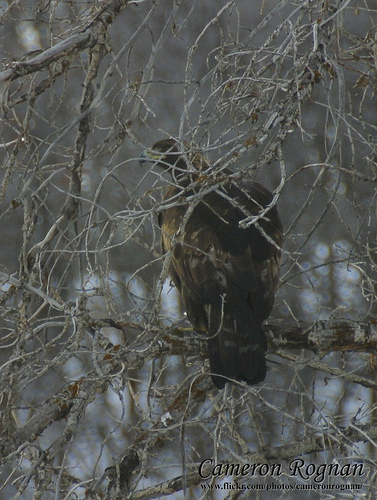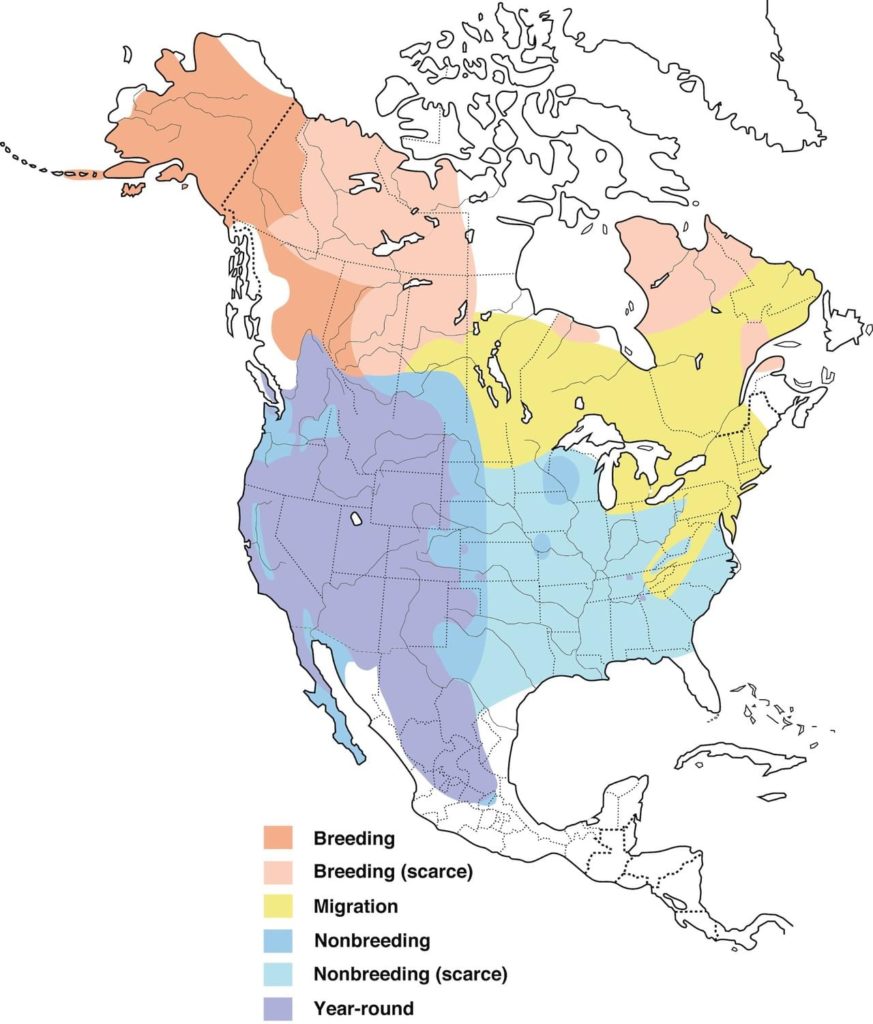Golden Eagle
(Aquila chrysaetos)
Weighing up to 13 pounds and with a wingspan of 7 feet or more, the golden eagle is one of the world’s largest birds of prey. Soaring across stretches of not only North America, but Central America, Europe, Africa and Asia, it is the more recognized eagle species globally compared to its popular cousin in America, the bald eagle.
In ancient times, the Greeks and Vikings saw the golden eagle as a consort and messenger of the gods, and to the Romans it was the mark of the empero. Long named the “King of Birds, ” medieval European cultures for centuries viewed it as a symbol of power and majesty, adorning heraldic crests and coats of arms with its strong and assertive image.
When falconry flourished, the golden eagle was flown only by kings. The golden eagle was an important bird to Native Americans as well. Prized as tokens of strength, valor and power, eagle feathers were treasured for use in ceremonies. Some western tribes even took eaglets from their nests and raised the birds in their camps to collect feathers when they molted. Settlement of the west however brought controversy and persecution to the golden eagle. Viewed as a rival responsible for depredations on lambs and calves, golden eagles became targets of bullets, traps and poison. As recently as 1948 some states still paid a bounty for golden eagles, and until outlawed in 1962, aerial gunning was common in parts of the west. Its reputation as killer persists despite many studies showing that golden eagles usually only eat livestock already dead from other causes. Normally they feed on a broad range of birds, reptiles and mammals, though jackrabbits are their primary prey.
Today, the golden eagle is the most numerous eagle in North America, living primarily in the west where the population is estimated to exceed 60,000 birds. It is an eagle of rugged cliffs, canyons and the adjacent open country which provides consistent breezes and thermals for soaring. The shiny golden washed feathers of its head and nape give it its name. The rest of the feathers of its body are a rich dark brown except for a trace of white feathering at the base of the tail. It belongs to a group of eagles known as “booted” eagles because it has feathers extending down the entire length of its legs to the toes. In the Red Cliffs Desert Reserve, golden eagles may be observed year-round. Next time you’re out in open county, look skyward for these masterful hunters soaring above.

